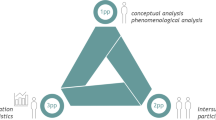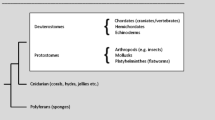Abstract
The discovery of the genetic code has shown that the origin of life has also been the origin of semiosis, and the discovery of many other organic codes has indicated that organic semiosis has been the sole form of semiosis present on Earth in the first three thousand million years of evolution. With the origin of animals and the evolution of the brain, however, a new type of semiosis came into existence, a semiosis that is based on interpretation and is commonly referred to as interpretive, or Peircean semiosis. This suggests that there are two distinct types of semiosis in Nature, one based on coding and one based on interpretation, and all the experimental evidence that we have does support this conclusion. Both in principle and in practice, therefore, there is no conflict between organic semiosis and Peircean semiosis, and yet they have been the object of a fierce controversy because it has been claimed that semiosis is always based on interpretation, even at the cellular level. Such a claim has recently been reproposed in a number of papers and it has become necessary therefore to reexamine it in the light of the proposed arguments.
Similar content being viewed by others
References
Anderson, M., Deely, J., Krampen, M., Ransdell, J., Sebeok, T. A., & von Uexküll, T. (1984). A semiotic perspective on the sciences: steps toward a new paradigm. Semiotica, 52(1/2), 7–47.
Arnellos, A., Bruni, L. E., El-Hani, C. N., & Collier, J. (2012). Anticipatory functions, digital-analog forms and biosemiotics. Biosemiotics (in press).
Augustine of Hippo (389ad) De Doctrina Christiana. In: W. M. Green (ed) Sancti Augustini Opera, 1963, CSEL 80, Vienna.
Barbieri, M. (2003). The organic codes. An introduction to semantic biology. Cambridge: Cambridge University Press.
Barbieri, M. (2006). Semantic biology and the mind-body problem: the theory of the conventional mind. Biological Theory, 1(4), 352–356.
Barbieri, M. (2008). Biosemiotics: a new understanding of life. Naturwissenschaften, 95, 577–599.
Barbieri, M. (2010). On the origin of language. Biosemiotics, 3(2), 201–223.
Barbieri, M. (2011). Origin and evolution of the brain. Biosemiotics, 4(3), 369–399.
Brier, S., & Joslyn, C. (2013). What does it take to produce interpretation? Biosemiotics (in press).
Danchin, A. (2009). Bacteria as computers making computers. FEMS Microbiology Reviews, 33, 3–26.
Favareau, D. (2007). The evolutionary history of biosemiotics. In M. Barbieri (Ed.), Introduction to biosemiotics (pp. 1–67). Dordrecht: Springer.
Florkin, M. (1974). Concepts of molecular biosemiotics and molecular evolution. In M. Florkin & E. H. Stotz (Eds.), Comprehensive biochemistry, vol.29A (pp. 1–124). Amsterdam: Elsevier.
Heidegger, M. (1950). The thing. In: Poetry, Language, thought [1971] Harper, San Francisco, 161–184.
Knoll, A. H. (2003). Life on a Young Planet. The first three billion years of evolution on Earth. Princeton: Princeton University Press.
Kohonen, T. (1984). Self-organization and associative memory. New York: Springer.
Markoš, A., & Cvrčková, F. (2002). Back to the science of life. Sign System Studies, 30, 129–147.
Markoš, A., & Cvrčková, F. (2012). The meaning(s) of information, code… and meaning. Biosemiotics (in press).
Markoš, A., & Faltýnek, D. (2011). Language metaphors of life. Biosemiotics, 4, 171–200.
Markoš, A., & Švorcová, J. (2009). Recorded versus organic memory. Biosemiotics, 2, 131–149.
Nicolelis, M., & Ribeiro, S. (2006). Seeking the neural code. Scientific American, 295, 70–77.
Peirce, C. S. (1906). The basis of pragmaticism. In C. Hartshorne & P. Weiss (Eds.), The collected papers of Charles Sanders Peirce, Vols I–VI (pp. 1931–1935). Cambridge: Harvard University Press.
Posner, R., Robering, K., & Sebeok, T. A. (1997). Semiotik/Semiotics: A handbook on the sign-theoretical foundations of nature and culture volume 1 (p. 4). Berlin: Walter de Gruyter.
Schopf, J. W. (1999). Cradle of life: The discovery of Earth’s earliest fossils. Princeton: Princeton University Press.
Sebeok, T. A. (1963). Communication among social bees; porpoises and sonar; man and dolphin. Language, 39, 448–466.
Sebeok, T. A. (2001). Biosemiotics: Its roots, proliferation, and prospects. In: K. Kull (Ed.), Jakob von Uexküll: A Paradigm for Biology and Semiotics. Semiotica, 134(1/4), 61–78.
Sebeok, T. A., & Umiker-Sebeok, J. (Eds.). (1992). Biosemiotics. Berlin: Mouton de Gruyter.
Taborsky, E. (1999). Semiosis: the transformation of energy into information. Semiotica, 127, 599–646.
Taborsky, E. (2006). The Nature of the Sign as a WFF (Well-Formed Formula). In D. Dubois (Ed.), Computing Anticipatory Systems.CASYS 2005. AIP Conference Proceedings. Melville, New York.
Acknowledgments
Paul Cobley has contributed with various suggestions that I was very glad to accept, especially because they did more than improving the paper. They proved to me that a Peircean semiotician and a code biologist can actually talk to each other and benefit from it, and I found this a good omen for the future of biosemiotics.
Author information
Authors and Affiliations
Corresponding author
Rights and permissions
About this article
Cite this article
Barbieri, M. Organic Semiosis and Peircean Semiosis. Biosemiotics 6, 273–289 (2013). https://doi.org/10.1007/s12304-012-9161-5
Received:
Accepted:
Published:
Issue Date:
DOI: https://doi.org/10.1007/s12304-012-9161-5




